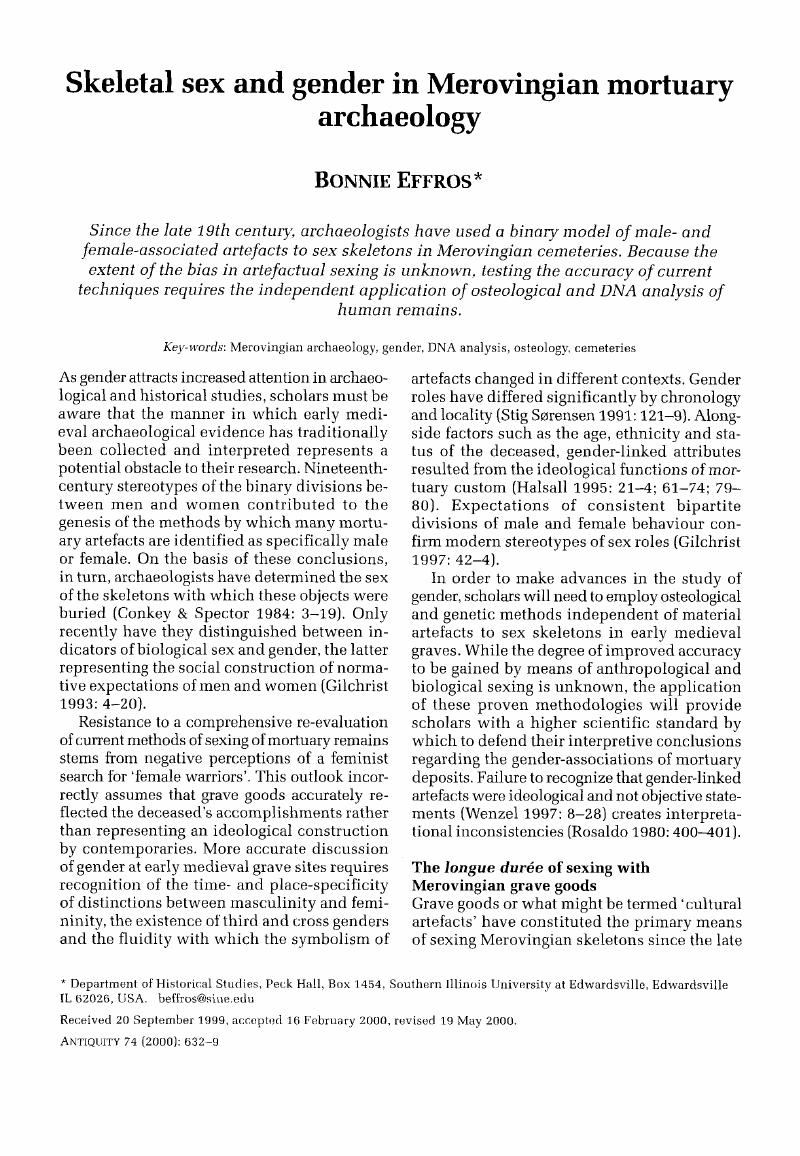Crossref Citations
This article has been cited by the following publications. This list is generated based on data provided by Crossref.
Effros, Bonnie
2002.
Creating Community with Food and Drink in Merovingian Gaul.
p.
25.
Geller, Pamela L.
2008.
Conceiving sex.
Journal of Social Archaeology,
Vol. 8,
Issue. 1,
p.
113.
Thurston, Tina
2009.
Unity and Diversity in the European Iron Age: Out of the Mists, Some Clarity?.
Journal of Archaeological Research,
Vol. 17,
Issue. 4,
p.
347.
Hollimon, Sandra E.
2011.
Social Bioarchaeology.
p.
147.
Roberts, Charlotte
2013.
Archaeology in Practice.
p.
300.
Rubio Cano, Irina
2016.
Museos, arqueología y género: la exposición de la época visigoda en el Museo Arqueológico Regional de la Comunidad de Madrid.
Revista Historia Autónoma,
p.
11.
Liccardo, Salvatore
2018.
Different Gentes, Same Amazons.
The Medieval History Journal,
Vol. 21,
Issue. 2,
p.
222.
Nakhaeizadeh, Sherry
Morgan, Ruth M.
Rando, Carolyn
and
Dror, Itiel E.
2018.
Cascading Bias of Initial Exposure to Information at the Crime Scene to the Subsequent Evaluation of Skeletal Remains,.
Journal of Forensic Sciences,
Vol. 63,
Issue. 2,
p.
403.
Fischbach, Thomas
2019.
Méthodes d’enregistrement des données en archéologie.
Nakhaeizadeh, Sherry
Dror, Itiel E.
and
Morgan, Ruth M.
2020.
Sex Estimation of the Human Skeleton.
p.
327.
Mary, Laura
2021.
Déstabiliser la binarité en archéologie : le cas des tombes 137 et 260 de la nécropole mérovingienne de Bossut-Gottechain.
Frontière·s,
Moilanen, Ulla
Kirkinen, Tuija
Saari, Nelli-Johanna
Rohrlach, Adam B.
Krause, Johannes
Onkamo, Päivi
and
Salmela, Elina
2022.
A Woman with a Sword? – Weapon Grave at Suontaka Vesitorninmäki, Finland.
European Journal of Archaeology,
Vol. 25,
Issue. 1,
p.
42.
Guillon, Mark
Jouneau, David
Effros, Bonnie
Rolland, Noémie
Gryspeirt, Noémie
Santos, Frédéric
and
Colleter, Rozenn
2022.
À armes égales : femmes et armement dans le cimetière mérovingien de Romilly-sur-Andelle (Eure, France).
Archéologie médiévale,
Vol. 52,
Issue. ,
p.
47.



